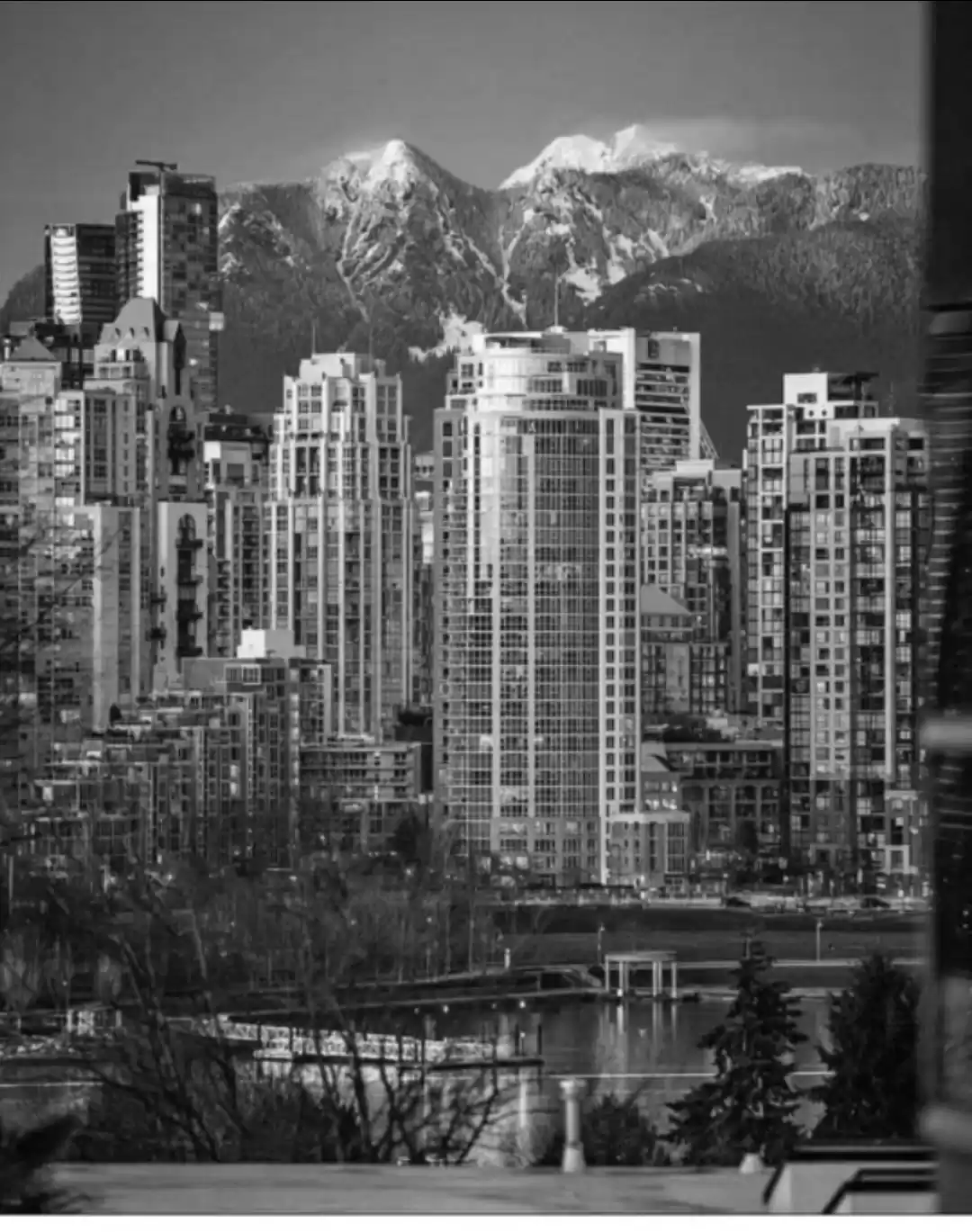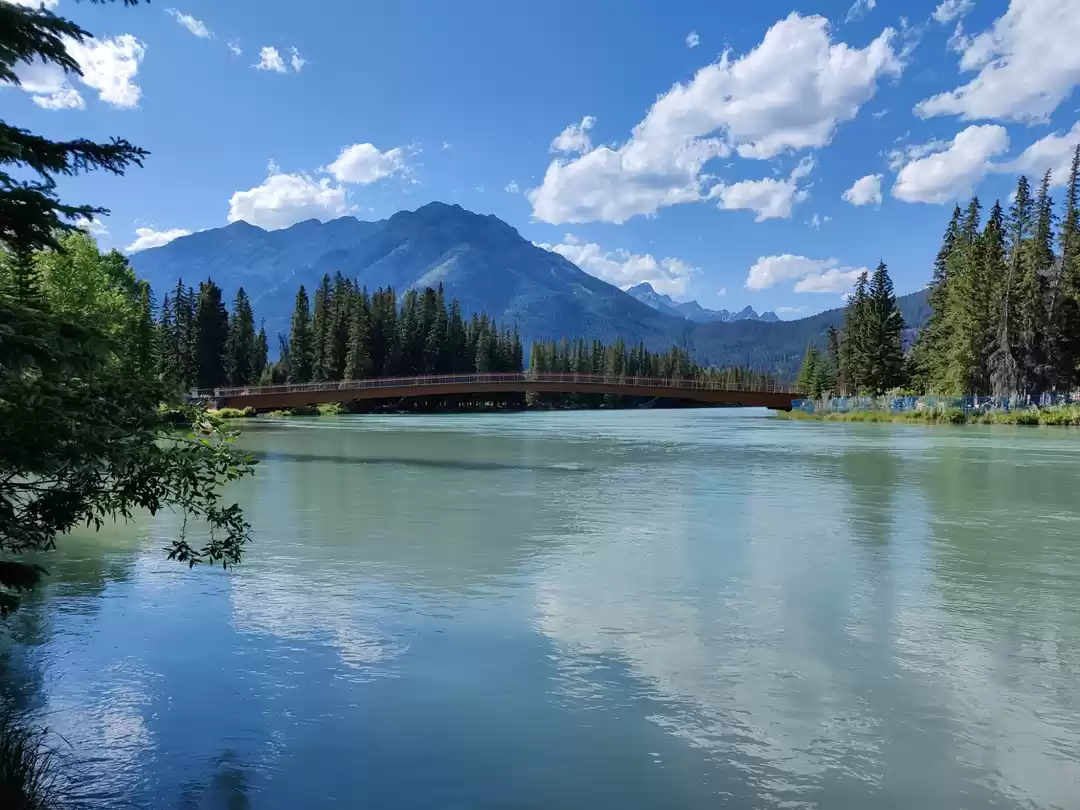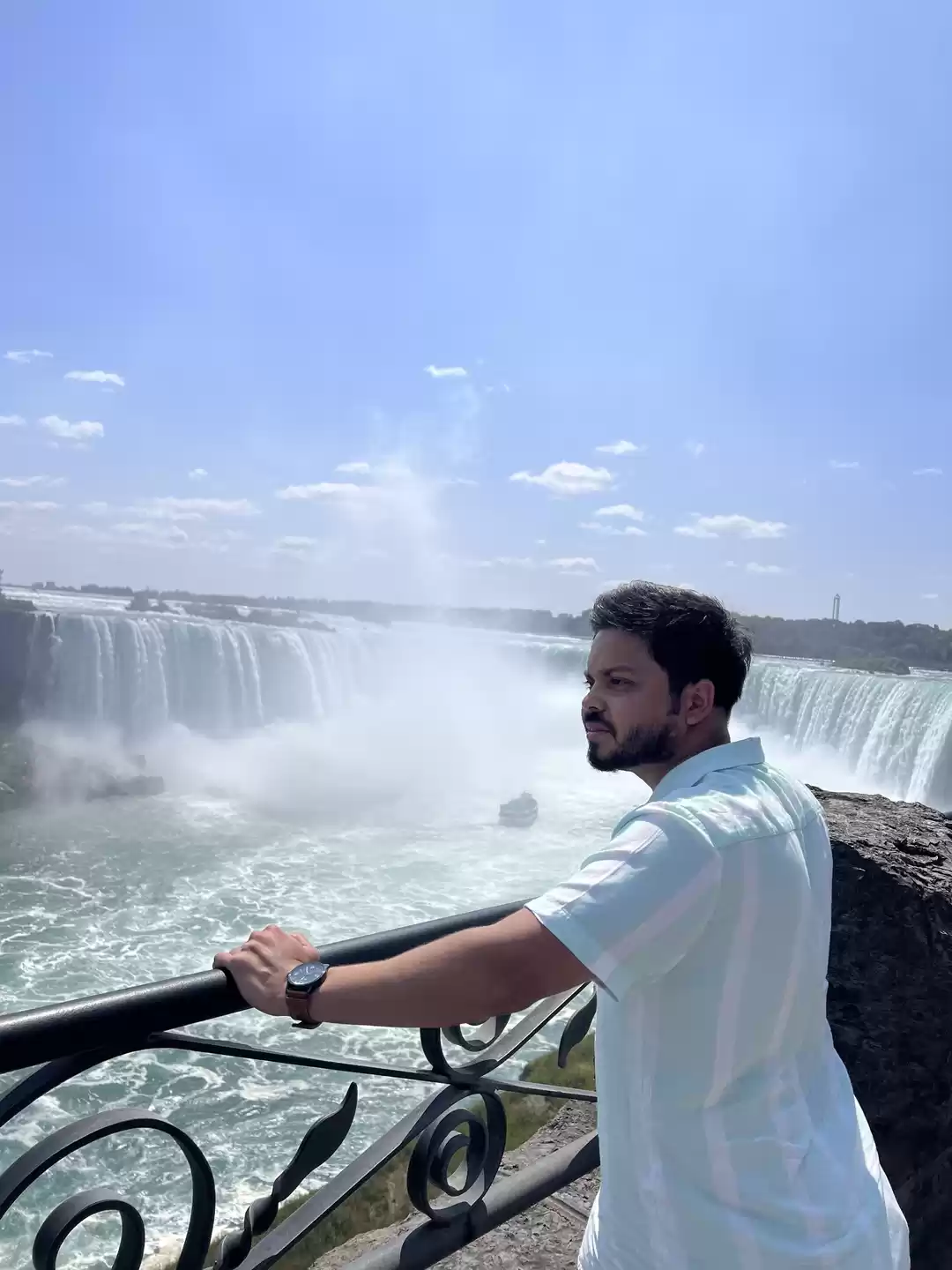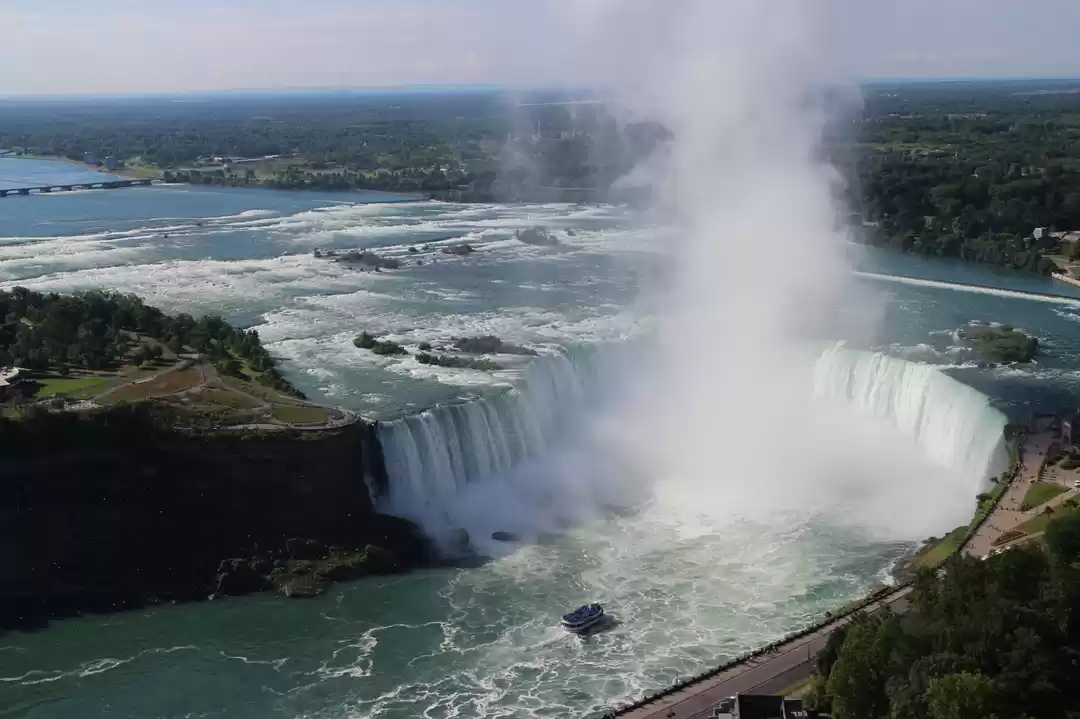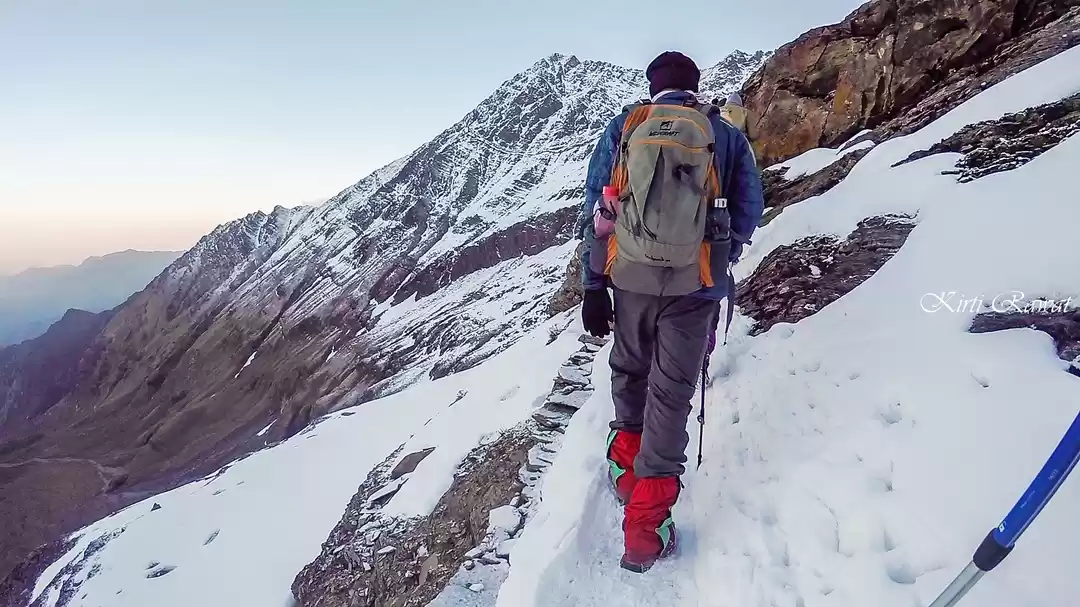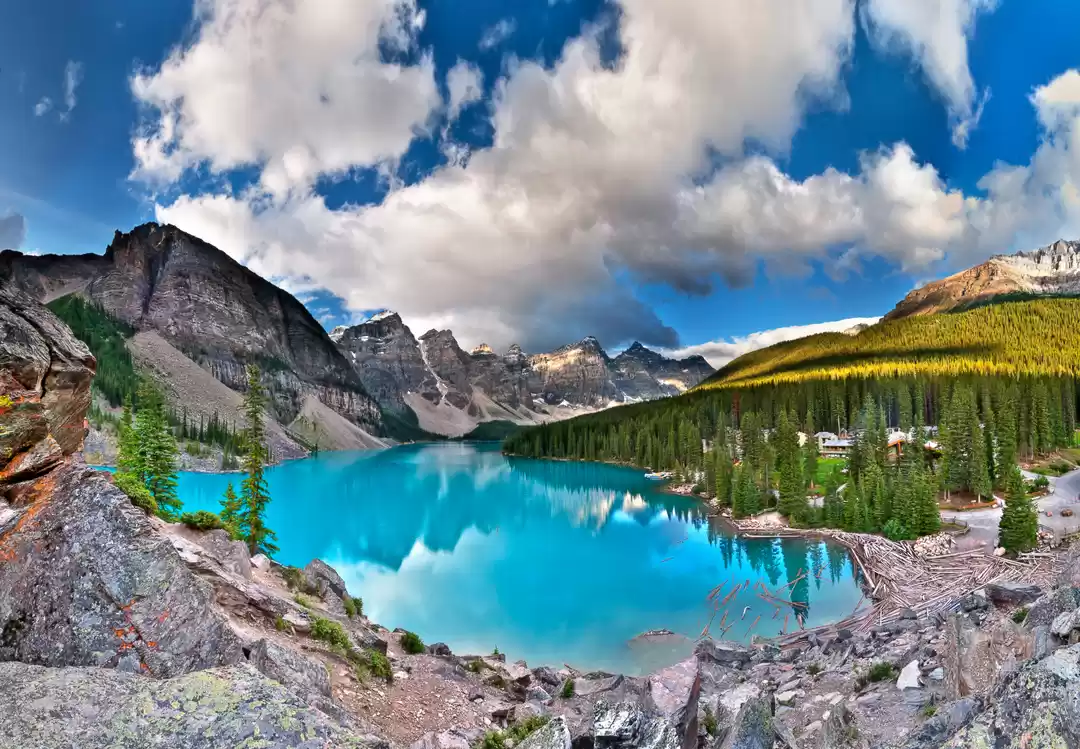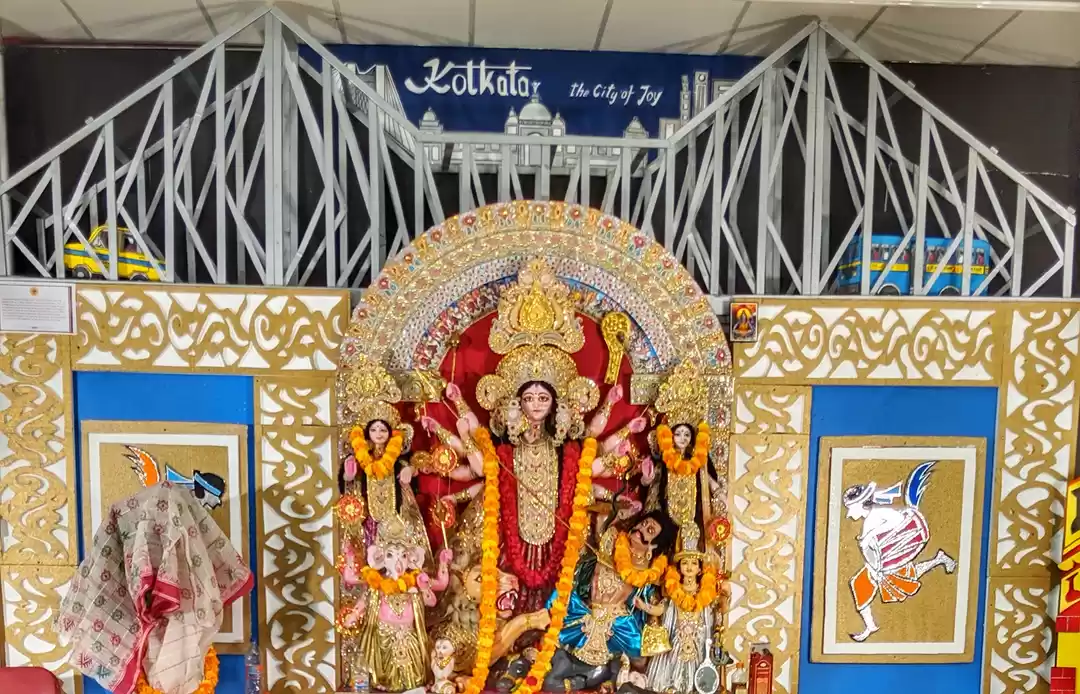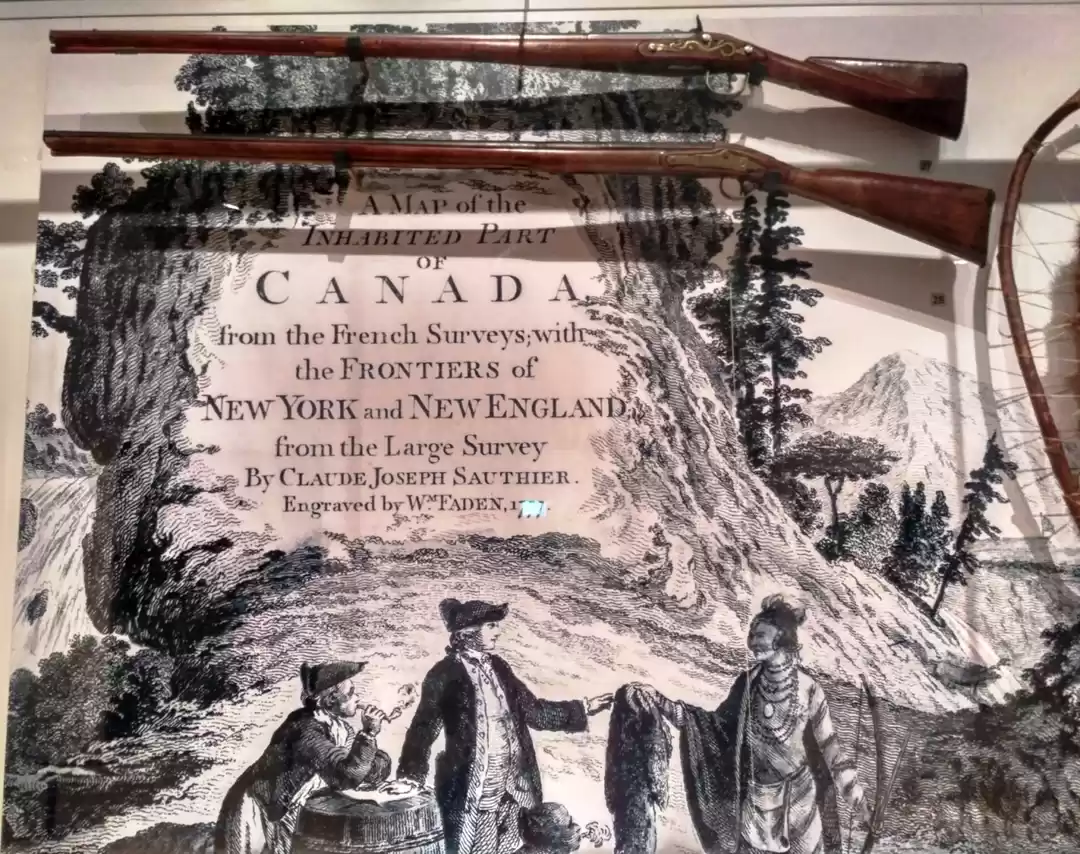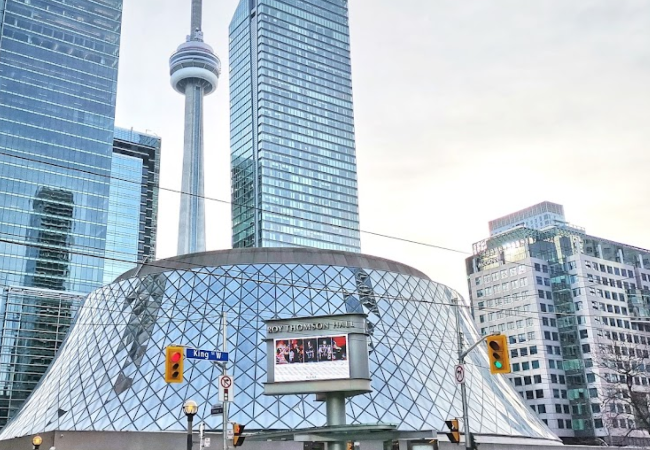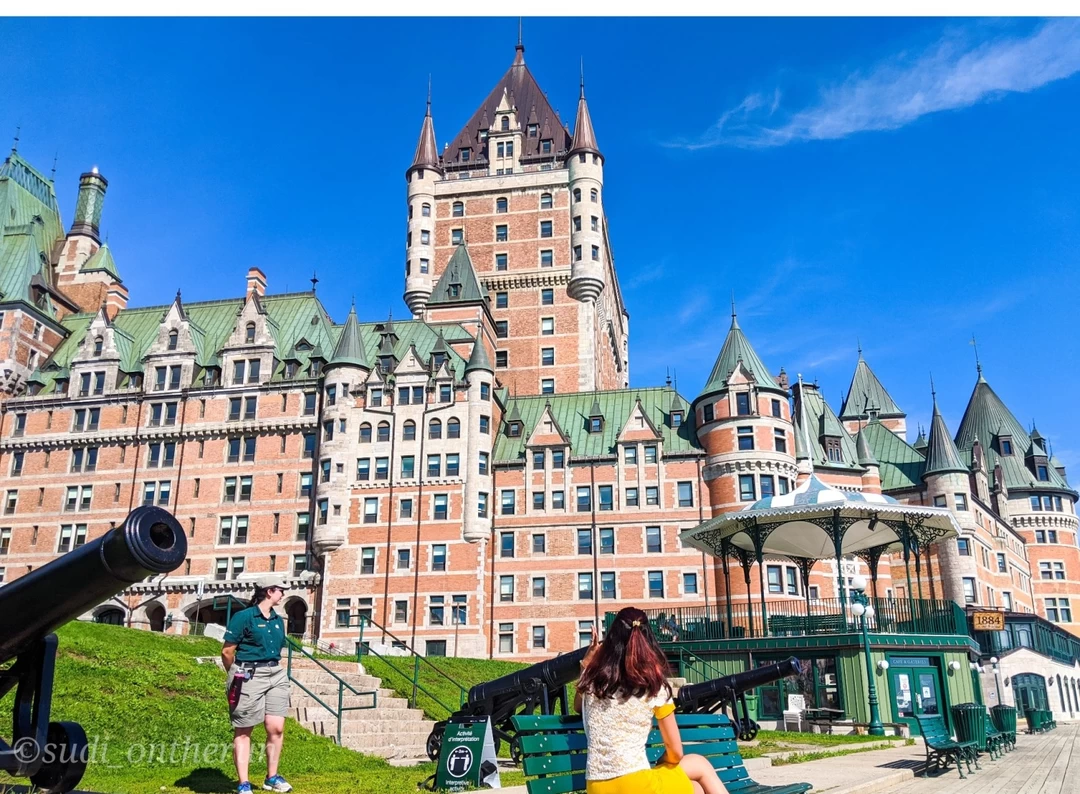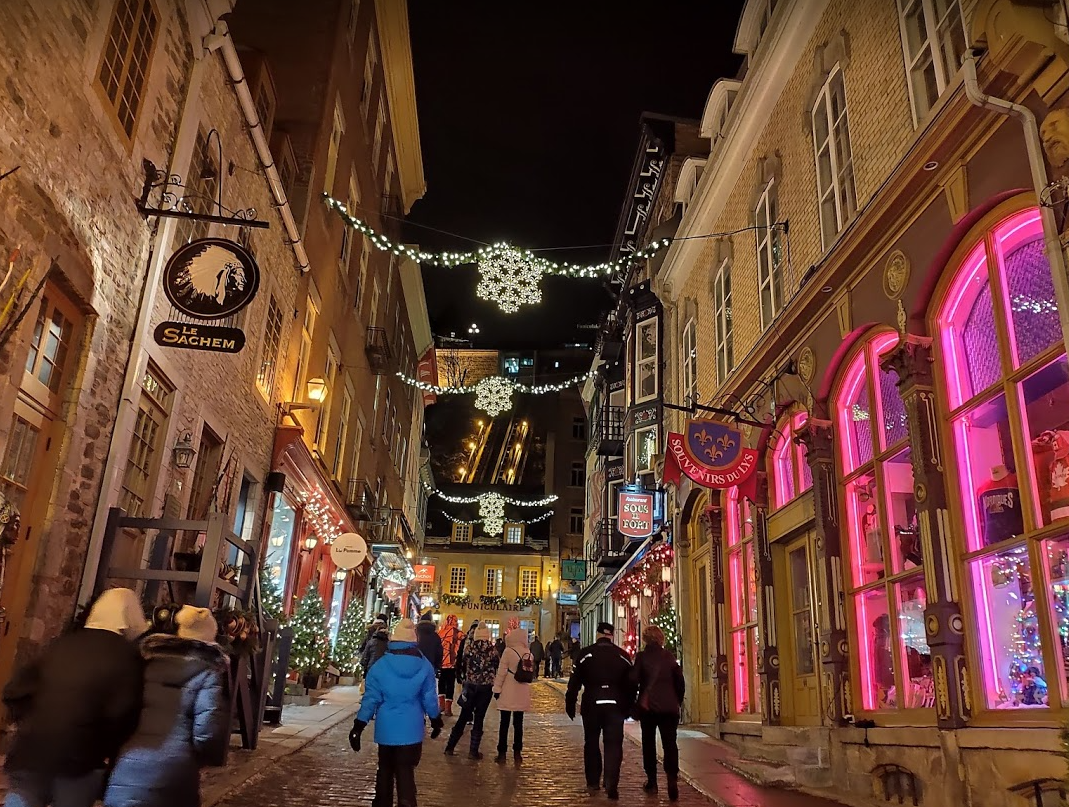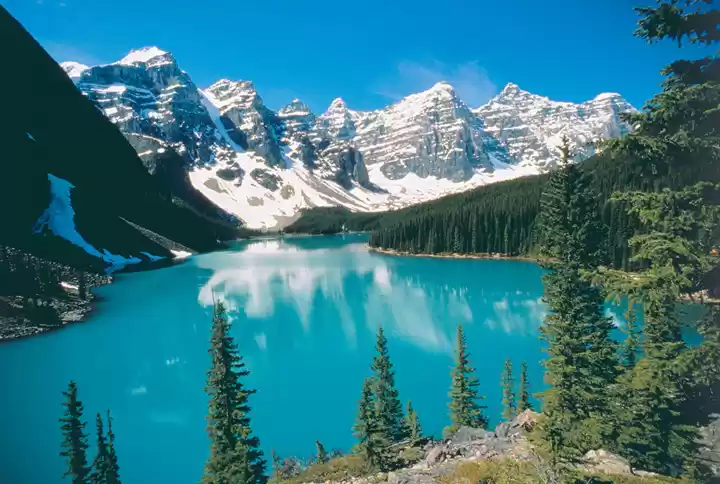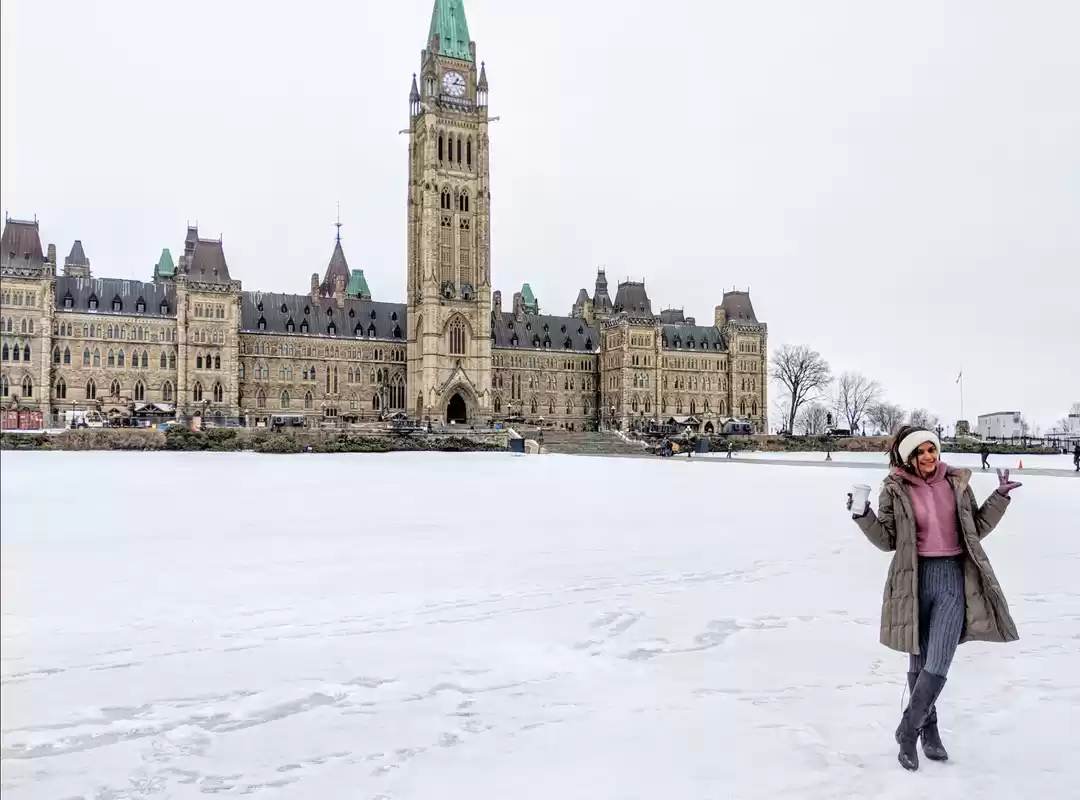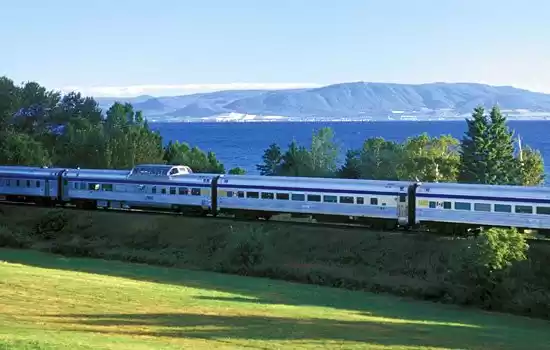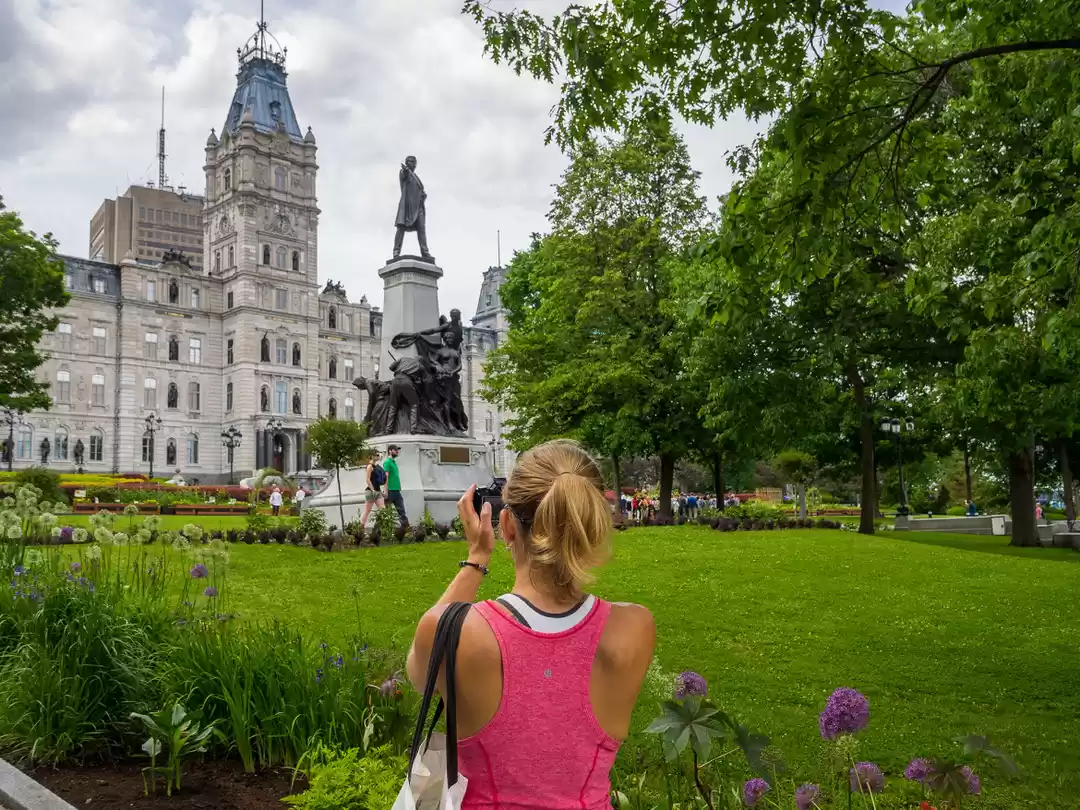
After thinking about it a million times, we finally decided to spend our vacations in Canada. We will travel through Toronto, Montreal, Quebec, Saguenay to Ottawa. Well, the first thing we did was to book the flight. The next thing is to hire the rental car. At the time of making the reservation online, the system does not allow us to hire the driver.
So we try to make the reservation by phone. And we got a big surprise when they tell us that at that moment they have a promotion with which the final price will be somewhat lower. In addition, the payment can be made at the time of the collection of the car and not at the time of booking.
Day 1 - Toronto
After passing the security check with hardly any queues, we waited patiently for the boarding time. The flight is an Airbus A310, something old, so it has no plugs in the seat or individual screens. In addition, the space between seat is quite small. There is internal wifi. To eat they serve a sandwich, drink and coffee, and a little before arriving a small snack, and some bars to satiate the hunger.
At the scheduled time we landed at Toronto Pearson Airport. The immigration is a little chaotic because at that time several arrivals coincide and the distribution of the queues is not very clear. However, the waiting time is not much. In ten minutes we get to the corresponding window, where we show the passport. They ask us a couple of questions and immediately we go to collect the suitcases, which arrive without problems.
Then we cross the terminal, which is not small, and we go to pick up the rental car. It is all very well indicated, and soon we arrived at the office in the first basement. We picked up the car, loaded the bags and started. It was our first experience with a car with automatic transmission, and as the rules mandate we tied our left leg behind and went outside. In ten minutes we arrived at a somewhat outdated three-star hotel. There are very large, apartment-style rooms with kitchens.
It's almost 7 in the evening and it's time to start looking for something to eat. The hotel is located in an area with few buildings, and as it does not have a restaurant we ask where we can have dinner. They give us a photocopy of a map with a few restaurants within a reasonable walking distance. In fact, they are pizzerias. The rest are burger points, which as we will see are very frequent.
We were aware that in Canada tips are mandatory. In fact, these are part of the salary of the waiters. However, at the time of payment, we tell the waitress that we have just arrived and we ask her how the system works, to corroborate our information. She explained that this percentage ranged between 10-15% or a fixed amount.
They bring us the VISA machine. We put the card yourself that asks you, the language, amount, and if we agree, the tip we want to leave, either a fixed amount or a percentage, that offers a 15-20%. It asks for our PIN and finally confirms. We turn back to the hotel. Tomorrow begins our first day in Canada.

Day 2 - Thousand Islands
After breakfast, we load the bags again and head for Gananoque, a small town from where the Thousand Islands excursions start. We see huge trucks, very long and many of them with one or several trailers, and those cabins with long noses that we see in American movies. The brands of the most common cars are curiously Japanese and Korean.
We see Hyundai, Kia, Toyota, Nissan and in smaller amount Ford, Volkswagen and some Mercedes and BMW. There is also a lot of pick-up vans, which is dominated by the American brands GMC and Ford. The speed limit is 100 km/h on freeways and wide roads and 90 km/h in the rest. Anyway, soon we realize that all vehicles, absolutely all, including trucks, move at 110-120 km/h.
Well, the sites for the thousand islands excursion are Kingston, Ivy Lea, Rockport, and Gananoque. We decided on the latter because it is a small town and (as we read) there are no parking problems. When we go to the ticket office to buy the tickets they tell us that the next boat is complete, and therefore we will have to wait until 3 o'clock in the afternoon.
We take the opportunity to eat a hamburger of course and then we get in line to embark. When opening the cord it seems that the world is going to end because all the people shoot to take place on the upper deck to have the best views. Actually, from anywhere you see everything, but hey, we are like that.
The Thousand islands are distributed in a not very extensive area of the San Lorenzo River. We see large mansions to small islets with wooden houses. The San Lorenzo River acts as the natural border between Canada and the United States. In principle our orientation allows us to determine that to our left we have Canadian territory and to our American right.
But after a while turning from one side to the other, and passing through several of the islands, we end up a bit disoriented. When we think we are seeing the United States territory it turns out that we notice that they have the Canadian flag, and vice versa. In any case, the excursion, which lasts an hour, is fun and interesting. By the way, the weather is very cloudy and gloomy.
Back in Gananoque, we take the car and we have to travel 250 km to Montreal. On the highway, we see several posters, immense, which warn us of the fines that we will have to pay if we exceed the speed limits. Anyway, we do not know if there are, but we practically did not see cameras. We see only one mobile located in a van with a huge luminous sign indicating the existence of it. We continue to see that absolutely nobody is driving at 100 km/h or even mega-trucks that move in large numbers.
Arriving in Montreal, the navigator takes us through a toll bridge. As we were informed, there are no toll roads in Canada, except the 407, which serves to decongest the Toronto bypass. In this case, there are no toll booths, only license plate readers located at both ends.
In the case of a rental car, the invoice is sent to the address of the rental company, which subsequently forwarded to the user. The problem is that the costs charged by the rental company, in my opinion, was exorbitant, and the final price can be almost abusive. However, it must be recognized that in the contract we are warned of this fact.
In short, if it is not strictly necessary I would not use this highway. As we said we were arriving in Montreal and the navigator took us through a toll bridge, specifically the Champlain bridge. As at that time we were not clear on what payment system we would find, and to avoid any subsequent scare, we decided to change the route.
We go through the Jacques Cartier bridge, at the end of which is the hotel where we will stay. This bridge, more than two and a half kilometers long, joins the two sides of the San Lorenzo River and the Saint Helen's Island. At the beginning of it we started to find some congestion, but in the center, we stopped.
After a few moments, we see in the rearview mirror that they are approaching at high speed and with all the sirens running various fire engines. We moved very slowly and began to find police officers, each time in greater numbers. Finally, just a few meters further on we arrived at the hotel parking lot.
Without exaggerating it seems that we are in a state of siege, although a large number of people seen on the street seems oblivious to all this movement. We go to the hotel reception, and after the procedures, we asked the receptionist what happened. And she tells us that night there are fireworks!
There is a large crowd of people, many of them sitting in chairs. Well, the truth is that we found everything very strange and exaggerated. The location of the hotel is very good, since it is opposite the metro stop, which in less than a quarter of an hour will leave us in the center of Montreal.
Day 3 - Montreal
Today we have the whole day to discover Montreal. We start after lunch. It is a great advantage to be able to leave the car in the hotel parking lot all day and be able to get around by public transport without having to worry about where to park. In our opinion Montreal does not have any special attraction. We started with the town hall, which is closed as it is Sunday. So we only see it from the outside.
In the opposite is the Ramezay castle, which according to the Canada travel guide we have is one of the recommended places to see. At the door we see soldiers and we have the intuition that it is not worth much, so we desist to enter. On the same side is the historic center of Montreal, specifically the Jacques Cartier and St. Paul square are the most emblematic roads.
There is also the area of bars and restaurants. A little further on we find the Bonsecours, an old market that today houses some commercial galleries with the majority of international clothing franchises. We arrived at the Notre Dame Cathedral. The religious buildings would not be the main points of interest to visit Canada, but we entered.
We have the feeling of being inside a French cathedral. The difference is on the outside, as it is surrounded by large skyscrapers and the contrast is quite impressive. After lunch, we spent the afternoon visiting the Mont-Royal. To get there, we let ourselves be guided by intuition and, of course, what happens is that we appear in the university zone, far from the access road.
Back, and now, with the map in hand, we go up to the viewpoint, by means of wooden stairs, although we can also use a path, longer but with an easier slope. Along the way, we can see how squirrels, are not elusive and are accustomed to human presence. We could even caress some of them.
Well, after the hard climb we reached Mont-Royal. There we find a building in which various exhibitions are held. The best is the balustrade from which we have a fantastic view of Montreal and the San Lorenzo River. That's the only reason why it's worth going up there. Back in the center, we decided to take the subway and get closer to the Saint Helena Island.
It is a green lung of the city and a great entertainment area. During the summer, on weekends there are concerts and a multitude of performances, some of which are free. There is also a planetarium and an area of water attractions. Being Sunday it was all crowded with people. We finish the day at the Casino. As in all the casinos of the world, there were a large number of Asians at the gaming tables. We return to the center, have dinner, take the subway, and go back to the hotel.
Day 4 - Quebec
After having breakfast and loading our bags in the car, we set off on our way to Quebec. We can do it by the left of the San Lorenzo River, by the Felix Leclerc highway, or by the right side, by the Trans-Canada highway. We take the latter. The traffic is flowing out but from the start, there are monumental traffic jams, which apparently are common. We refuel at a gas station.
We return to the highway, and at Trois-Rivieres, we cross the river and continue along the Felix Leclerc. The road surface, in general, has seemed somewhat deficient with some bumps and irregularities. The main roads have very few curves, very wide radius and monotonous and endless lines. If we also add the driving of a car with automatic transmission, I can say that for the first time in my life I've been bored driving.
At noon we arrived at the parking lot of the hotel. As the room is not yet ready, we take advantage of the opportunity to eat at an adjacent restaurant. Once again, the room is very spacious and with access to a small balcony. A bit expensive, the best thing about the hotel is its location. Although it is not in the center, it is very well connected with it.
In front of the hotel is the bus stop. In about 20 minutes one leaves us in the entry to the old center of Quebec, which we entered through the Holy door, one of the six that are preserved in the wall. The old Quebec is unmistakably European, French more specifically. Undoubtedly, this is where the French descent of the city is most clearly seen.
We pass in front of the town hall. Soon we arrive at the Terrasse Dufferin, a privileged viewpoint over the San Lorenzo River and the lower part of the old town of Quebec. The immensity of the river is seen here in all its reality. Right behind the Dufferin terrace stands the impressive silhouette of the Chateau Frontenac.
In fact, despite the name of the castle, it never has been. In fact, it has always had the same function and it is a luxury hotel. We access the hall and check that it still retains that Victorian air with which it was built, but with a decadent touch. At the end of the 19th century and the beginning of the 20th, the Canadian Pacific Railway not only was in the business of construction and railway operation but also built luxury hotels.
Currently, the Chateau Frontenac is the most photographed hotel in the world. The Dufferin terrace extends parallel to the river and when it finishes it continues a walk called Promenade des Gouverneurs. There are several roundabouts that serve as a lookout. We also see a ramp that when we read the information panels we learned that it is a ramp to go down skiing! Indeed, each winter usually snows a lot here.
The Governors Promenade stretches to the Plains of Abraham, a large urban park with four million visitors per year and where musical performances are held. To the side, and forming part of the park we find the Citadelle, a military enclosure, that as it was in restoration we could see externally.
When we just turned around we found ourselves again in the Old Quebec. It has cooled a little and a jacket is not too much. We are in a very tourist area, which is why there are plenty of restaurants. As a result, prices are also significantly higher than in Montreal. In the restaurants, a jug of water to drink is served free of charge.
Another detail that we liked is that we have never had to ask for the bill. They bring it to us, thus avoiding long periods of desperate waiting, so common in some restaurants. We left the restaurant. Now it's too cold. So we go back to the bus and we retire until tomorrow.
Day 5 - Montmorency Falls
Today we decided to change plans on the move. We had planned to spend the whole day in Quebec and the next day at St. Simeon passing by the Montmorency Falls, the Basilica of Sainte-Anne-de-Beaupre, the Canyon Sainte-Anne and the coast of Charlevoix. We felt that all day in Quebec would be excessive and we chose to go to Montmorency waterfall in the morning and this way the next day would not be so tight. It was a wise decision.
In about twenty minutes by car, we reach the park's upper parking lot. There is another one in the lower part, at river level. The entrance includes the car park and the cable car that connects both car parks. Although the park is much more extensive, the vast majority of people move there to see the waterfall. According to the travel guide, the Montmorency Falls is higher than the Niagara Falls.
I will not deny it, but the difference in magnitude between the two is such that the comparison is a bit absurd. However, the visit is worth it. Leaving the parking lot, we take a path towards a footbridge over the waterfall. From there we continue along another path that leads to some stairs that go down in zig-zag to the bottom.
There it is possible to approach the foot of the waterfall, although paying the price of a monumental shower. From here, after about 300 mt we arrived at the other parking lot and the cable car to return to the start. The views that we get from any point of the route are spectacular. Once again, from the top, we have a panoramic view of the San Lorenzo River.
Back to the hotel, we leave the car parked and after lunch, we return to the old city, where we see the Notre Dame Cathedral. Later we went to the lower part and to Petit Champlain. We could place ourselves perfectly in an old neighborhood of any French city. After dinner we take a short walk to the bus stop, and around midnight we arrive at the hotel.


